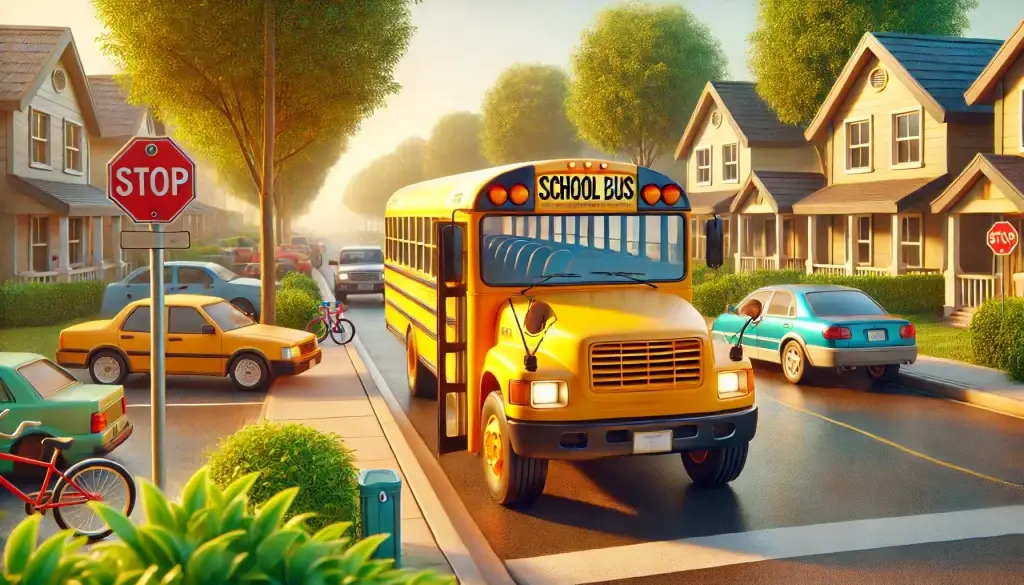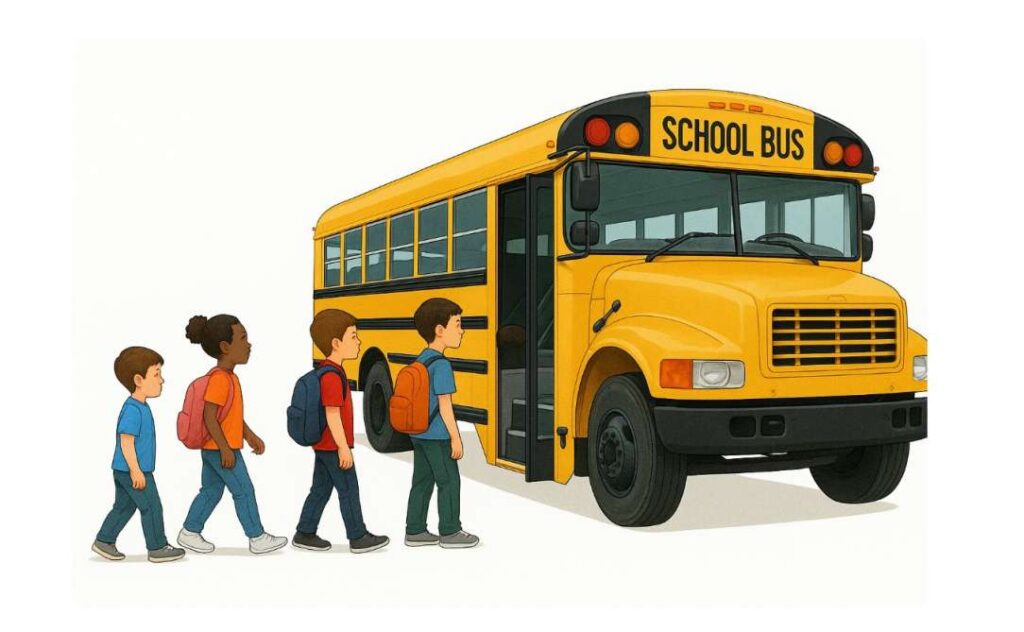A great school transport system requires implementation of certain systematic features through which safety and comfort of the students can be ensured. This article provides 18 Features Of A Great School Transport System
18 Features Of A Great School Transport System
A great school transport system requires implementation of certain systematic features through which safety and comfort of the students can be ensured. This article provides 18 Features Of A Great School Transport System:

18 Features Of A Great School Transport System
Buses Should Be Air-Conditioned
In regions with high or extreme temperatures, air-conditioned buses are essential. They ensure that students travel comfortably without being exposed to heat stress, dehydration, or fatigue before reaching school. A controlled climate also helps keep students calm and well-behaved during the journey.
Monitoring Cameras Should Be Installed in Each Bus
Security cameras are vital for monitoring student behavior, driver actions, and any unusual incidents. They not only enhance student safety but also provide valuable footage in case of disputes or emergencies. It promotes accountability among both students and staff. 18 Features Of A Great School Transport System
Bus Locations Should Be Monitored by the Bus Company
Real-time GPS tracking ensures that all buses stay on their designated routes and follow the planned schedules. This feature also allows parents and school administrators to check the live status of buses, reducing anxiety and improving communication.
A Nanny Should Be Available in Each Bus
Especially important for kindergarten and younger students, a dedicated nanny provides extra supervision, ensures safety during boarding and drop-off, and helps children in emergencies or when they feel unwell. It also relieves pressure from the driver.
Bus Route Should Not Be Changed Without Approval from Supervisors
Any sudden or unauthorized changes in the route may lead to confusion, safety issues, or late arrivals. Route approvals ensure consistency, reduce risks, and help parents plan drop-off and pick-up routines more reliably.
Basic First Aid Treatment Equipment Should Be Available
Equipping every bus with a first aid kit ensures that minor injuries or health concerns can be addressed immediately. It reflects a school’s commitment to safety and shows preparedness for medical situations during transit. 18 Features Of A Great School Transport System
Bus Should Never Stop for Petrol Filling While Kids Are Inside
Filling fuel with children onboard can be hazardous due to exposure to fumes or fire risks. It’s safer and more efficient to refuel before or after student transport hours, minimizing delays and health risks.
Boys and Girls Seats Should Be Separate (Where Possible)
Wherever feasible, maintaining separate seating promotes comfort, prevents distractions, and respects personal boundaries — especially among older students. It can also help avoid conflicts or uncomfortable situations. 18 Features Of A Great School Transport System
Bus Colors Should Be Standardized
Using a uniform color (e.g., yellow) makes it easier for children and parents to identify the correct bus quickly. It improves school branding, visibility, and reduces confusion during pick-up and drop-off.
Punctuality and Consistency Should Be Practiced and Monitored
Strict schedules for pick-up and drop-off build trust with parents and ensure that students arrive at school and return home on time. Supervisors should regularly audit time logs and intervene when patterns of lateness appear.

Driver and Nanny Should Be in Uniform
Uniforms bring a sense of professionalism, trust, and easy identification. It helps students recognize their designated staff and adds to the security and accountability of the transport system.
Driver and Nanny Should Be Trained on Communication
Training staff in age-appropriate, respectful, and polite communication helps build a positive environment for children. It also teaches staff how to professionally handle difficult situations with parents or anxious children.
After Drop-Off, the Bus Must Be Thoroughly Checked
A mandatory inspection after each route helps ensure that no child is accidentally left behind — a serious safety hazard. This should be a documented procedure with supervisor checks in place.
Backup Buses Should Be Available for Emergencies
Having standby buses reduces downtime in case of breakdowns or accidents and ensures uninterrupted transport service for students. It’s a vital part of risk management.
Each Bus Should Have an Attendance System
A digital or manual attendance log helps track when students board and leave the bus. This system provides parents and school staff with a layer of assurance about their child’s safety.
Kids Should Not Be Handed Over to Anyone Other Than Parents
Strict handover policies prevent kidnapping or accidental releases to the wrong person. Only pre-authorized guardians should be allowed to collect children, and ID verification is a must.

Drinking Water Should Be Available in the Bus
Especially during long routes or hot days, having a water bottle or dispenser in the bus ensures students stay hydrated and comfortable. It’s a simple but meaningful health safeguard.
Monthly Mechanical Audits Should Be Conducted
Certified mechanics should inspect each bus at least once a month. This helps detect wear and tear, prevents unexpected breakdowns, and ensures buses are always roadworthy and safe for children.
Check out our thorough article 101 Signs Of A Great School
Closing Remarks
Does your child’s school bus offer these services/features? If you not, you may want to share this list on your school social media group to establish a great school transport system





2 comments
Below are my suggestions:
– Driver and nanny should be properly trained on how to speak to parents and kids.
– Emergency phone numbers should be painted inside the vehicle
– A couple of umbrellas should be available inside vehicles for sun & rain protection when needed.
– vehicle color should be standardized so that school bus is visible to all motorists .
[…] to students, providing parenting sessions, additional computer courses and skills, providing transport services for students. The principal need to work with Marketing and Product teams to work on new and better mechanisms […]